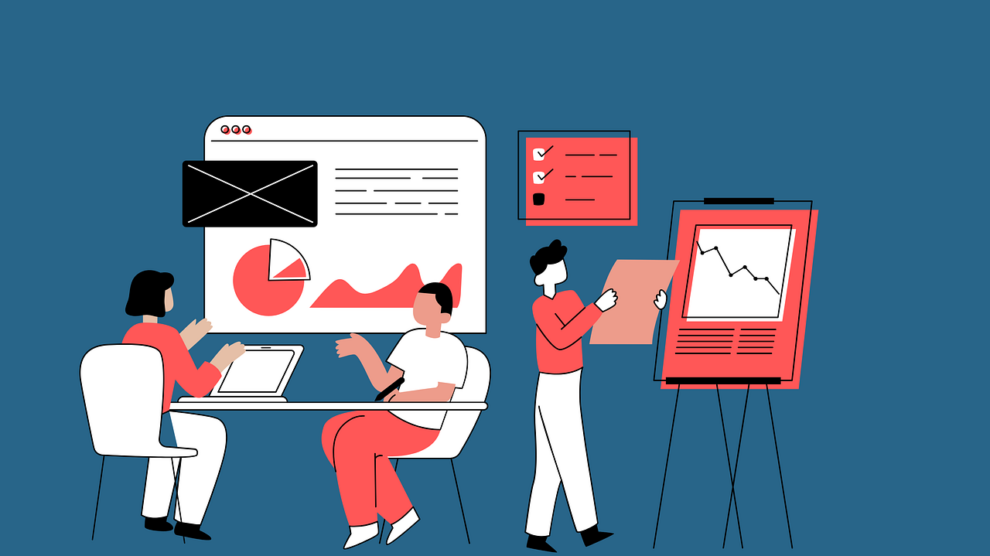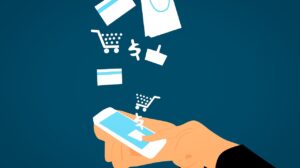For years, marketers leaned on the classic funnel because it was simple and easy to explain. People noticed a brand, thought about it, and eventually made a purchase. But that tidy little path just doesn’t match how people behave anymore. Today, someone can discover a brand on Instagram, Google it later, forget about it, see a friend mention it, and then come back days later on a completely different device. Attention is scattered, and digital habits are all over the place.
Because of this, brands have started moving toward something more flexible – Always-On Marketing Ecosystems. This method allows the brand to always be in play and in a responsive mode all the time to ensure the brand manages to work in the background as well. It is equivalent to looking for the best digital marketing course registration online. Think about how you look for one; you do not go in one shot, you circle it out through various touch points.
Brands that think ecosystems rather than funnels build more consistent visibility, a trust that feels earned, and conversion growth feels more organic.
Why the Funnel is No Longer Enough
A. Changing Consumer Behavior
Customer journeys today rarely follow a straight path. People move back and forth between platforms, scrolling on social media, checking a website, watching a quick review, and then forgetting about the whole thing until a few hours later. There’s no single starting point anymore. Every decision is influenced by dozens of tiny touch points scattered across the day. These “micro-moments”, the quick I want to know, I want to check, I want to buy impulses, happen without planning and often on different devices. With attention spans shrinking and habits becoming unpredictable, the classic funnel simply can’t map this chaos.
B. Algorithm-Led Discovery
Another significant shift is how users discover brands in the first place. Search is no longer the only gateway. Social platforms now push content based on what they think each user might like, which means every person ends up on a completely different path. Recommendation engines quietly shape decisions, often before someone even realizes they’re in a “buying journey.” One user might see a creator video, another gets a product suggestion on their feed, and someone else receives an AI-personalized recommendation. With journeys this fragmented and personalized, a rigid funnel just doesn’t fit today’s reality.
What is an Always-On Digital Marketing Ecosystem?
Key Definition
An always-on digital marketing ecosystem is fundamentally a living system. Instead of merely turning things on whenever a campaign kicks off, every piece of the brand’s digital footprints, content, ads, automation, analytics, user experience, is fully functional and always running on the back end. It stays on and running all the time and adjusts to what people are doing and how they are engaging. The idea is to be present, engaging, and visible, even when customers are not technically “in the funnel.”
Core Principles
This approach ultimately prioritizes continuity versus sporadic bursts of activity. It relies heavily on personalization, which creates a slightly different experience for each person based on their interests. Data is also a significant factor in determining what gets optimized and when. And rather than treating platforms independent of one another, there is an effort to create one cohesive brand experience across all engagement touch points.
How It Differs From Traditional Funnels
Instead of stewarding people from awareness to conversion in a linear fashion, an ecosystem operates in more of a looped fashion: people discover, engage, evaluate, convert, advocate, and ultimately return again. It reflects customer behavior as it is, not how marketers hope or wish it were.
Core Components of an Always-On Marketing Ecosystem
A. Always-On Content Engine
At the core of any consistent ecosystem is a consistent production of content. Not the typical “one large campaign, then silence,” but a blend of educational content, bite-size social posts, quick reels, long-form guides, and evergreen content to use for months. This mix helps the brand show up wherever people are looking. SEO, social, and video don’t operate separately here, they feed into each other. Someone might read a blog, later see a reel on the same topic, and eventually watch a short explainer. The repetition feels natural, not forced, because the content sits across different moments, not in one burst.
B. Continuous Paid Media Framework
In an always-on world, paid ads don’t switch on only when a brand wants revenue to spike. Evergreen ads run quietly in the background, catching demand as it appears. Budgets adjust based on performance instead of rigid monthly plans. Retargeting isn’t treated as a “campaign” either; it functions more like a net that catches people who’ve shown interest. AI-driven bidding helps a lot here because it responds faster than manual tweaking. The point is to stay present without shouting.
C. Marketing Automation & CRM Integration
Automation keeps the entire ecosystem functioning. Lead scoring is sorting through who is ready to buy and who needs to be warmed up. Segmentation makes sure people aren’t all pushed into the same generic messages. Email and WhatsApp play a big role too, simple reminders, nudges, follow-ups, and useful content delivered automatically. The goal isn’t to spam, but to keep the brand gently in sight.
D. First-Party Data Infrastructure
With cookies slowly disappearing, first-party and zero-party data have become essential. Brands now rely more on information people willingly share—preferences, interests, small signals gathered over time. This data shapes the personalized experiences that make the ecosystem feel relevant. It’s also what keeps the system durable in the long run, instead of getting shaken every time another privacy rule changes.
E. Full-Funnel Analytics Layer
To keep everything running smoothly, the ecosystem needs a strong measurement layer. Multi-touch attribution and marketing mix modeling is figuring out where the impact is actually coming from, and real-time dashboards pull all of this together so the teams can react right away instead of waiting for end-of-month reports.
How Brands Can Shift From Funnel Thinking to Ecosystem Thinking
Map the Real Customer Journey
The first shift is simply to understand how people behave, as opposed to how we hope they behave. That means digging into search trends, social chatter, CRM notes, and any data that shows where people pause, repeat steps, or circle back. Patterns eventually start to appear—small loops that customers fall into again and again. Those loops are far more useful than a straight-line funnel.
Build a Modular Content Matrix
Once those loops are clearer, organizations can create a content matrix that offers something for each stage: awareness pieces, engagement-level content, proof points, conversion nudges, and stories about advocates. The intent is not to create everything all at once but to create assets that can be reused, reshaped, and circulated. The content matrix keeps the system alive without a need for continuous reinvention.
Automate What Can Be Automated
A lot of the ecosystem’s power comes from automation. Simple things—like nurturing drips, abandoned cart reminders, or lead qualification flows—save time and keep customers from slipping through unnoticed. Even remarketing rules can run on autopilot once set up properly.
Unify Tech Stack and Data
For the ecosystem to work, all platforms must talk to each other. CRM, analytics tools, ad accounts, and communication channels need to share data so the experience feels consistent. Disconnected tools create disconnected journeys.
Operate Like a Product, Not a Campaign
Finally, treat the entire system like a product. Test often, adjust quickly, and make improvements every week or two. Ecosystems don’t “launch”; they evolve.
Examples of Always-On Ecosystems
Direct-to-consumer (DTC) brands are a great example within ecommerce that have a consistent schedule of educational material and product demonstrations, along with customer stories, while retargeting and CRM-driven follow-ups are automatic and decreased acquisition costs because those potential buyers were retained in the ecosystem at every step.
The ecosystem is slightly different in software as a service (SaaS), as companies use a combination of evergreen webinars, automated nurture sequences, and highly targeted ads, keeping prospects in the mix until they are ready to purchase at their own speed. Even if it takes the user weeks to decide, the ecosystem remains activated and gets users back into the buying process whenever they resurface; that user never falls out of the ecosystem.
Conclusion
The traditional funnel is still relevant, but it does not encompass the chaotic, back-and-forth nature of the decision-making process today. The brands that stand out today are the ones that create living ecosystems as opposed to campaigns that only happen occasionally. When a business stays present across channels, personalizes interactions, and uses data to refine its approach, the results compound, higher ROI and stronger brand equity. It’s the same shift happening in how people choose an online digital marketing course; they trust the options that show up consistently. An always-on ecosystem makes that kind of trust possible.





